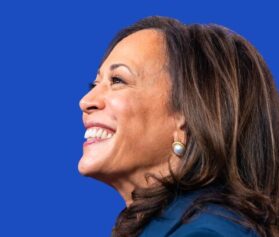Two years ago, Mmekom Udosen was so moved by the police murder of George Floyd and the idea of Black collective economics that she opened a bank account with OneUnited Bank.
“It opened my desire to learn more about finance and business in relation to the Black community,” Udosen told Finurah. “We don’t talk about money the way we should. The people who make decisions don’t include us.”

Udosen is an example of people participating in the “Bank Black” phenomenon, a movement of Black Americans consciously opening and consistently depositing funds into Black-owned banks. While Bank Black has been on the rise over the last two years, the movement is not new.
In 2016, the Bank Black challenge first rose in popularity when hip-hop artist and activist Michael “Killer Mike” Render spoke about Bank Black on MTV News and at BET News Town Hall. Render urged viewers to begin depositing their money in Black banks following the police shootings of Philando Castile and Alton Sterling. That same year, a group formed Bank Black USA.
The organization’s mission is to raise awareness of the significance of Black banks within Black American communities.
Since 2016, Americans have deposited more than $60 million into Black-owned banks, Business Insider reported.
“People are paying attention to Black-owned business banks,” Stephone Coward, co-founder of BankBlack USA, told Finurah. “We need to go in the direction of supporting our community.”
Hashtags such as #bankblack and #bankingwhileblack have increased in popularity, allowing Black Americans to be aware of Black financial institutions’ power.
Black banks have been around since the Reconstruction era. During the period following the American Civil War, Freedmen’s Savings Bank opened through the Freedmen’s Bureau. The bank was a private savings bank chartered by Congress on March 3, 1865, for the newly emancipated ex-slaves. At the same time, Congress passed “An Act to establish a Bureau for the Relief of Freedmen and Refugees” to provide food, shelter, clothing, medical services, and land to displaced Southerners, including newly freed Blacks.
Others followed, and by the Jim Crow era, there were 134 Black banks, with most existing in the South. During the civil rights movement, Dr. Martin Luther King Jr. encouraged Black Americans to demonstrate their economic power by utilizing Black-owned banks.
Today, there are 18 Black-owned financial institutions in the United States that are FDIC insured, according to Bank Black USA.
Many turn to Black banks because they feel they won’t have to worry about discriminatory bank policies. Black financial institutions currently grant more than 50 percent of their loans to Black borrowers.
In addition, Black banks are typically located in banking deserts — communities where no major banks are present, Coward explains. Instead, check-cashing operations, pawn shops, and predatory lenders are present in many Black American communities, all of which do not help people build and retain wealth. Black-owned banks, however, consistently reinvest in their communities by offering loan products and financial literacy education.
“Black-owned institutions have a people over profit approach while other institutions have a profit over people approach,” Coward said. “They care about people and the environment and economic benefit.”
Black entrepreneurs also tend to find themselves more welcomed at Black banks.
“Our theme is providing access to capital to address the wealth gap,” M&F Bank CEO James Sills told Finurah. “We offer technical and human resources to help people achieve their dreams. We offer a high-tech, high-touch approach.”
M&F Banks is the second oldest Black-owned bank in the United States. Since opening its doors in 1907, the financial institution has always focused on business owners and entrepreneurs to support their growth. At present M&F Bank clients are 90 percent commercial and 10 percent consumer, Sills added.
During the pandemic, business owners needed support applying for Payment Protection Program (PPP) loans. North Carolina-based M&F Bank responded by offering counseling and support in the application process. The bank funded $50 million in PPP loans to business owners, with an estimated 65 percent going to minority firms.
“Small businesses — without putting color on it — have experience and know what they are doing,” Sills said. “They are confident and dedicated but need to know how to present themselves, how to leverage products; that is what any business of any nationality has as a challenge.”




